FUFU AND MOFUNGO!
Fufu is more than just a common dish enjoyed in Africa. It is also a common dish enjoyed in Puerto Rico, Cuba, and the Dominican Republic.
In Africa, Fufu has a lot of spellings and pronunciations. Some of its various spellings include, “foofoo”, “foufou”, and “foutou”.
Fufu is a main item on a typical shopping list in West and Central Africa. Purchasing Fufu in these regions is like buying bread and milk here in the States. As bread and milk are hot items in the supermarkets, Fufu is a hot item in Africa’s open marketplaces. Merchants make sure they always keep stock of these high selling products.
Fufu is starchy root vegetable that’s made into a doughy-like texture. It has a bready, cake-like appearance and consistency. Sometimes it’s served alone dry or in cocoyam leaves or served wet in a bowl of light vegetable soup or stew, served with fish or smoked beef. Tomato and pine nut soup are a common liquid base in which fufu is served in. How fufu is prepared depends on the cultural or tribal background of the person who is preparing the dish.
There are some parts of Africa where the Fufu has the texture of a concentrated form couscous. In the Sub-Saharan and Eastern regions of Africa, Fufu has a myriad of sister dishes. In the Sub-Sahara there is a form of fufu called “ugali” which it is made from corn flour. Another form in Zambia is called “nshima”. In Malawi their fufu is called “nsima”. In Zimbabwe there’s “pap” and in South Africa, “posho”. Congo has a form called “bugari”. Uganda has “moteke”, “luku” as well as fufu and nshima. In Cameroon, one of several French-speaking nations in Africa, their version of fufu is sometimes called “couscous” or “Couscous de Cameroun”. However the Cameroon’s version of couscous is not to be mistaken with the couscous enjoyed in Morocco, Syria and other places in Northern Africa. They are definitely not one and the same.
Fufu is traditionally prepared with cassava, yams, or plantains and is mixed with water to give it a milder taste or milk for a richer taste.
The birthplace of Fufu traces back to Ghana with the Asante tribe. They call the colored form of their dish, “fufuo” and the white form, “fufuoop” (pronounced foo-foo-ooo with the “p” being silent). The word is derived from the Twi language spoken in Ghana and Côte d’Ivoire (the Ivory Coast). The rebirth of this language took place in the New World when the African slaves were brought to the Caribbean and South America. A group of runaway slaves known as the Jamaican Maroons were among the first community of people to merge parts of the Twi language in the New World with their other inherited dialects from the Tainos and the Europeans.
Some historical sources debate this theory. The opposing theory is that the origins of the Twi language in the Caribbean began when the Spaniards arrived in the Caribbean when the island was first inhabited by the indigenous people, the Taino Indians.
African slaves (and later the self-colonization of runaway slaves) flourished in the Caribbean when British explorers invaded Jamaica and battled with the Taino Indians to make the island British territory. Once British defeated the Taino Indians and gained control of the island, the population grew as a result of interracial relations, voluntarily and involuntarily. Soon, more British and Spanish settlers populated the area, taking with them thousands more of African slaves. And once again, more intersexual contact took place between the slaves. Some slave masters paired other slaves with one another for “breeding” purposes while other slaves were taken by force.
The Caribbean-Latino Take on Fufu
What makes Caribbean fufu different from African fufu is that Caribbean fufu- in all its forms- has a thicker, firmer, almost “doughy” texture. The Caribbeans also top their fufu with fried meats, vegetables and other savory ingredients.
In the Dominican Republic, fufu takes on the form of mangú (pronounced “mahn-goo”). The word mangú is believed to be of African origin, possibly from the Bantu tribe. Yet some sources say that the word is a slang expression of English origin, used by American military personnel in the early 1900’s. According to one historical account, when the Dominicans fed the food to U.S. servicemen mangú and they tasted the dish, many of them shouted, “man, this is good!” Sounds like something you’d see in a fast food commercial, doesn’t it?
In Cuba it’s called by it’s simply call by its native name, fufu. And like Cuba’s African ancestors, mashed yams or plantains make up the traditional Latino style of fufu in the Caribbean. What further distinguishes the two worlds of fufu is the texture and flavoring.
Mangú consists of boiled green plantains, mashing them like potatoes with some of its boiling water and vegetable oil. Milk and butter, although not a traditional technique, are also a favorite alternative used by the Dominicans instead of the vegetable oil for mashing the plantains. After all the ingredients are mashed and blended well, it then is topped with sautéed onions, deep-fried salami, deep-fried cheese, fried eggs or for some, avocado.
In Puerto Rico, Fufu is also one of several lip smacking ingredients used in the popular dish mofongo. Mofongo is also enjoyed in Cuba and the Dominican Republic. Mofongo is like the big daddy of all fufus because of all the ingredients and time that’s put into this dish so abundant and flavorful. It’s like a fufu paella! You have fried green plantains or yucca, mashed in broth, garlic, olive oil then they add bits of bacon or pork cracklings and it doesn‘t stop there. Typical mofongo dishes include vegetables, chicken, shrimp, crab or beef and is served along with either more fried meat (of choice) or a brothy chicken soup.
Another version of mofongo is served inside a chili relleno peppers stuffed with mashed plantains or yucca, and topped with either beef, seafood and ladled with a stewed sauce.
So there you have it, a little dish on famous African inspired meals starring one key ingredient, fufu. Now, for those of you who haven’t tasted this meal yet, I encourage you to head out to your local African or Spanish restaurant and order up a plate today! Love to hear your thoughts about it!
~Article written by Arose N Daghetto
Article (not pictures) © Copyright 2011 by Arose N Daghetto for Quiet Storm Enterprise. All Rights Reserved.

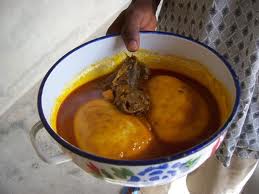
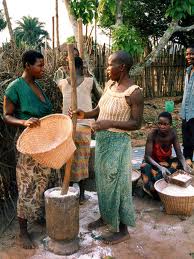
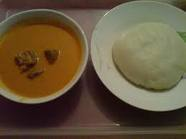
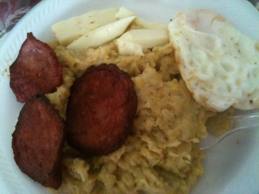
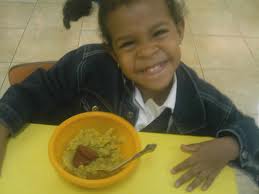
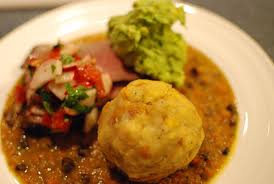
Study African culture and history more. There is no tribe called Bantu. Bantu is a word used to refer to several African ethnic groups, many of which are not related- from East Africa to West Africa. However, the actual Bantu ethnic groups are in eastern and southern Africa. Actuall, in most of the Bantu languages ntu means people and ba means together.
The Twi language spoken by the Asante/Ashanti of Ghana did not begin in the Caribbean, nor is it spoken by the Taino Indians. It is one of the Akan dialects spoken in Ghana. Fanti and Akua Pem are some others. I only refer to them as dialects because the speakers of these languages can for the most part undertand each other.
LikeLike
No I don’t need to study african culture and history more. I wrote this post a long time ago…what I wrote is what I wrote according to the resources I had AT THAT TIME. Period. I’m not here to do a battle of the minds and get into some senseless pro african/african american squabble. If you feel I wrote something on this post that misinformed folks, then create your own blog and go into further detail about what you feel to be “more accurate” information about the Bantu people/tribes or whatever you feel I got wrong here. Write your own blog about it, set the record straight as you feel it should be set and there you go. Done.
LikeLike
Thank you for reading my post and the cross reference. I enjoyed reading your post about your journey through the foods and experience of being in Puerto Rico. All the best and continued success to you.
LikeLike